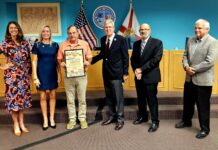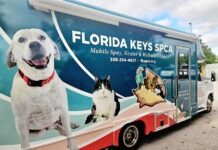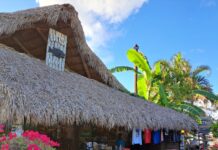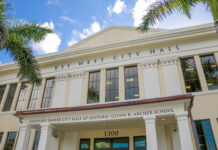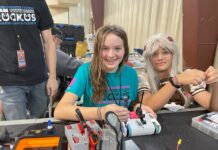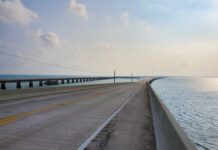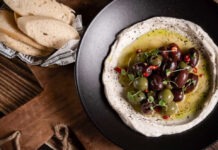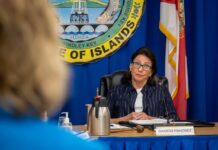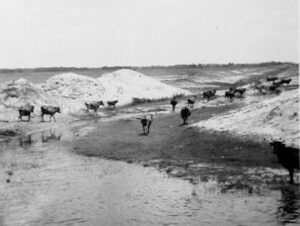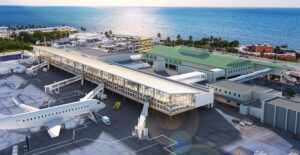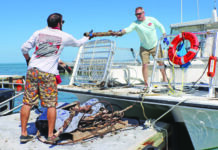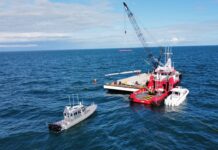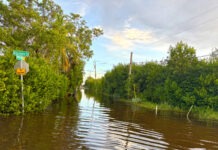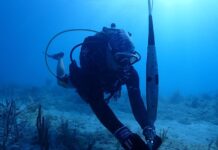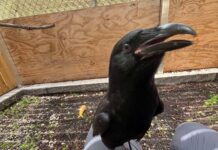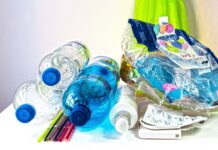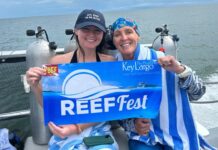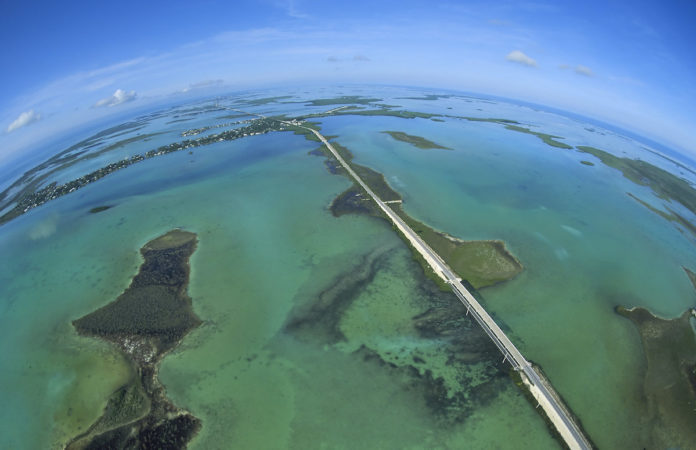
In June, the Florida Keys National Marine Sanctuary Advisory Council (SAC) seated new members and elected new leadership.
George Garrett, Middle Keys citizen-at-large member and Marathon city planning director, was elected as chair. Ben Daughtry, commercial fishing – marine life/tropicals member and CEO of Dynasty Marine Associates, which operates Aquarium Encounters in Marathon, was elected as vice chair.
The Weekly asked them to share their priorities for the upcoming session. They will serve until August 2022.
- In your opinion, what are the biggest threats to the sanctuary?
GG: The designation of this National Marine Sanctuary came after the grounding of three large vessels in the late 1980s. Those were immediate, finite, and locally impactful. Issues like that are well managed today.
We didn’t think then that we would see declines in the resource that we are seeing now. I believe that we (the Keys) are still responsible for some of the direct and immediate impacts to the Sanctuary that we continue to see today – notably prop scarring. However, the Florida Keys have taken on and largely completed such massive projects as new wastewater and stormwater infrastructure throughout the Keys. And, we are tackling the equally massive task of improving canal water quality.
So, the larger systemic and extrinsic impacts to the Sanctuary persist. We see a huge loss in coral cover and a coral disease pandemic. We are dealing with the impacts of species loss (spiny urchin) and exotic species introductions (the lionfish). We continue to look for solutions through the Comprehensive Everglades Restoration Plan (CERP) to issues of water delivery, timing, quantity, and quality as those waters enter Florida Bay. During extremes of weather we continue to see the impacts of polluted fresh water coming out of both the Caloosahatchee and Loxahatchee Rivers. Large municipalities on both coasts continue to pump minimally treated wastewater effluent to tide. The nutrients and potentially diseases, emanating from those outfalls pass the Keys in both directions (currents and counter currents). Finally, we are beginning to SEE the impacts of climate change, particularly through sea level rise and changes in marine chemistry causing ocean acidification.
BD: In my view, some of the biggest threats to the sanctuary include water quality (not only from outside of the sanctuary, but potentially inside the boundaries as well), over utilization of the resource (our reefs are some of the most heavily used anywhere in the world), and the inability for the environment and its resources to recover on their own.
- Which industry/sector do you represent, and what are the main concerns of that industry/sector?
GG: “Citizen at Large – Middle Keys.” I see the position as representing the broad perspective of interests in the Keys concerning the activities and mandates of National Marine Sanctuary. Though naysayers exist, I believe that most people in the Keys and those that visit us want to see responsible long term protection and management of our magnificent coral reef, nearshore, and backcountry resources. Equally, they want to make sure that in that protection, they retain access to something that they may have enjoyed their entire lives. They want to ensure that the balance is maintained between resource protection and wise, non-impactful use of the Sanctuary.
BD: Commercial Marine Life – Being one of the most heavily regulated fisheries in the sanctuary, I want to make sure that our fishery remains a sustainable way to earn a living into the future.
- The Sanctuary Blueprint has been very divisive in the community. How can we come together as a community for the best protection and sustainable use of the resources we have?
GG: Change is always difficult. Trust is hard won. The Sanctuary Advisory Council is part of the means to help bring the Keys’ community together. I have long-term friends on many sides of the issues surrounding management of the resources of the Florida Keys. Similarly, other SAC members know and communicate regularly with their constituency. Through all of the impassioned discussion in front of the Advisory Council or through angst or support expressed in various forms of social media, I have not seen anyone that does not have an interest in protecting the resources within the boundaries of this Sanctuary.
So, we sit and we listen. And, we talk and we communicate.
The National Marine Sanctuary program promotes wise use, adaptive management, and most importantly compatible use of the waters and resources surrounding the Keys. Through a continuing dialogue, we will make the Blueprint work. It will be a document of compromise forged through a willingness to put protection of this resource and sustainable use first.
BD: We have to listen to the science and then actively do something to fix the problems. Everyone should be able to give up something small to make sure there are resources here for future generations. If science shows us an area truly needs additional protections, we should come together as a community to provide those protections without putting families that have been here generations out of business.
- What are your top priority items for the SAC to address during your term?
GG: The SAC was created and has been engaged to provide technical, professional, and expert advice to the Sanctuary Superintendent. Currently, we need to focus on the smooth transition toward approval of the Restoration Blueprint. We will do this by engaging our constituencies to ensure reasonable protection of their livelihoods while providing answers to questions about how to maintain a sustainable resource. From my own perspective, the resources of the Sanctuary are in decline. We need to support the Sanctuary program in carrying out their mission. We need to quit pointing our finger at Sanctuary staff or the Program as the cause of our woes and realize that, with our help, they are the solution.
Priorities:
- Support completion of the Restoration Blueprint
- Support expanded efforts toward education and outreach, both for
- our visitors and
- our children from whom will come the future stewards of Sanctuary Resources
- Support expansion of coral research and restoration efforts
- Support efforts to limit extrinsic impacts to the resources of the Sanctuary
- Completion of CERP
- Enhancement of Wastewater Treatment and Stormwater Management practices
- Support Canal Restoration efforts
- Support restoration of full law enforcement capacity
BD: I would like to see the Restoration Blueprint finalized so we can all know what changes are happening and move on. I’d like to see coral restoration become a major focus for the next 10-20 years in the FKNMS to see if we can start to turn the tide on coral loss within our sanctuary.
Additionally, new and reassigned members include: Dr. Erinn Muller, Mote Marine Laboratory, research and monitoring; Ken Reda, MarineMax, boating industry from recreational fishing member; Suzy Roebling, Upper Keys citizen-at-large from alternate; and Karen Thurman, Marathon Hyatt Place, Lower Keys tourism from boating industry alternate.
New alternate members are Dr. Patrick Rice, College of the Florida Keys, research and monitoring; Billy Litmer, Honest Eco Tours, boating industry; and Dave Makepeace, Upper Keys citizen-at-large from member.
Elena Rodriguez, former dive shop owner, retained her seat as the Upper Keys diving member. Representing charter sport fishing, Steve Leopold, Leofish LLC, remains an interim member along with Richie Gomez, Captain Conch Charters, as an interim alternate.
Member and alternate seats for charter sport fishing and recreational fishing will be included in the next recruitment period in late 2020.
